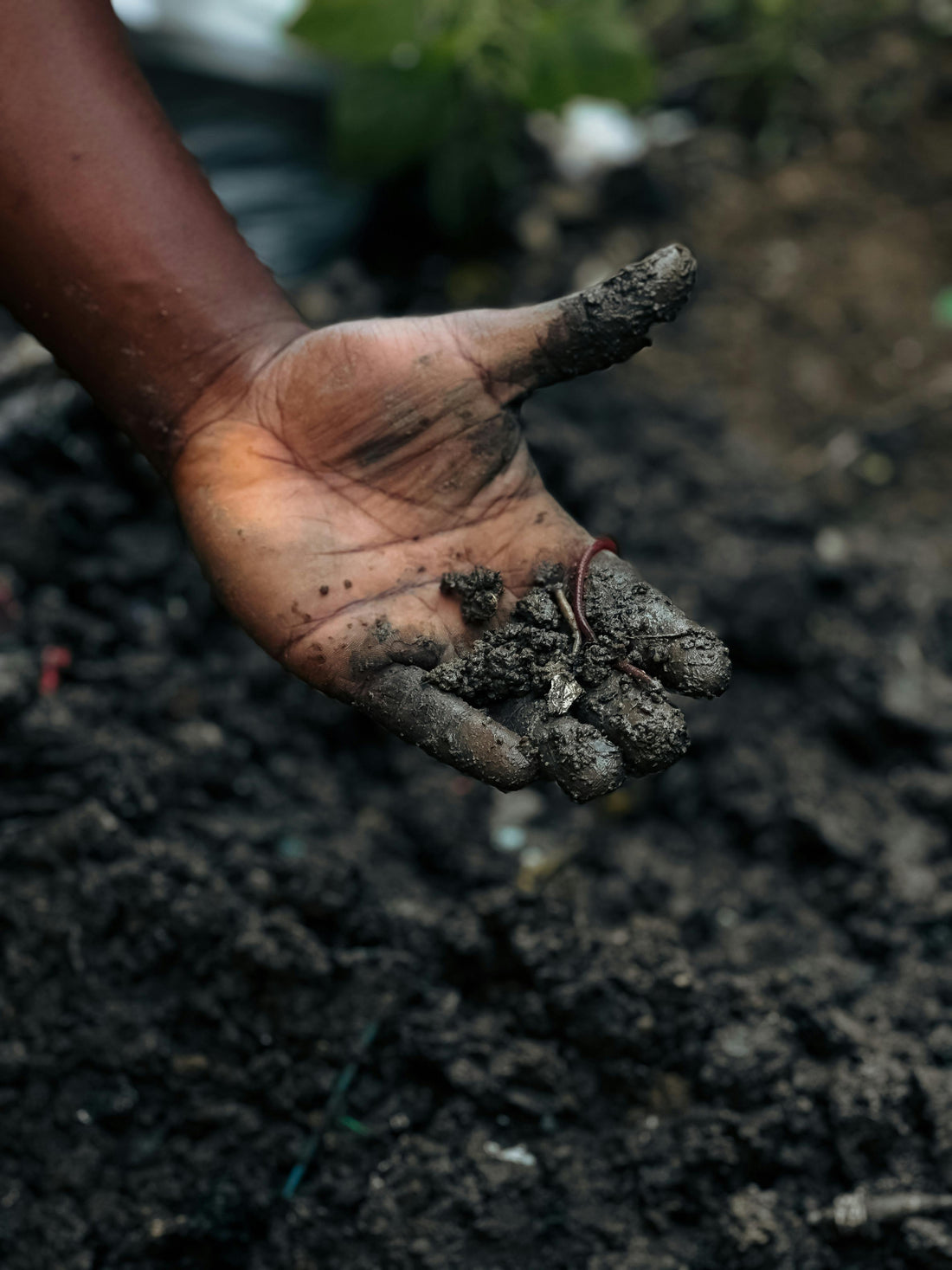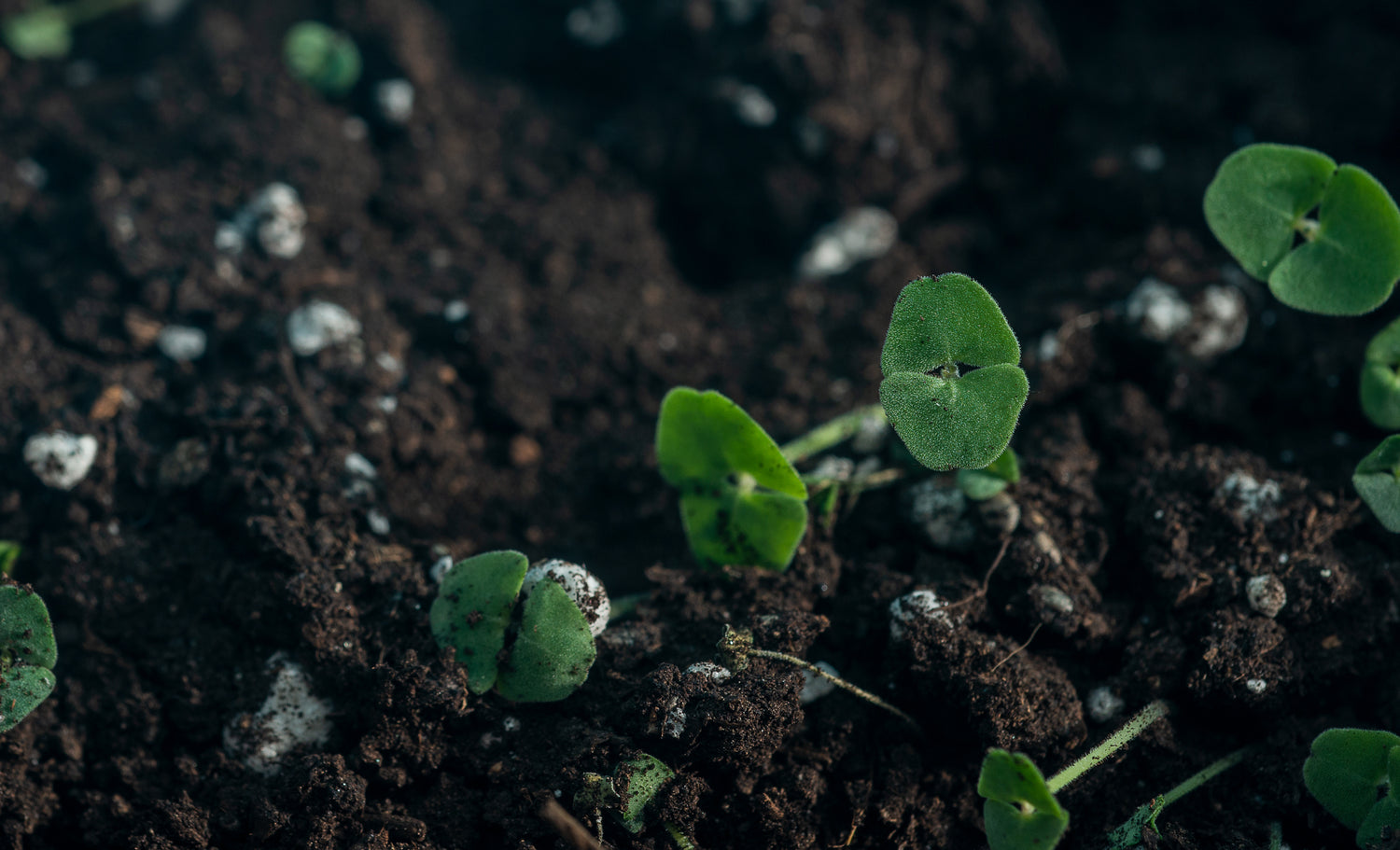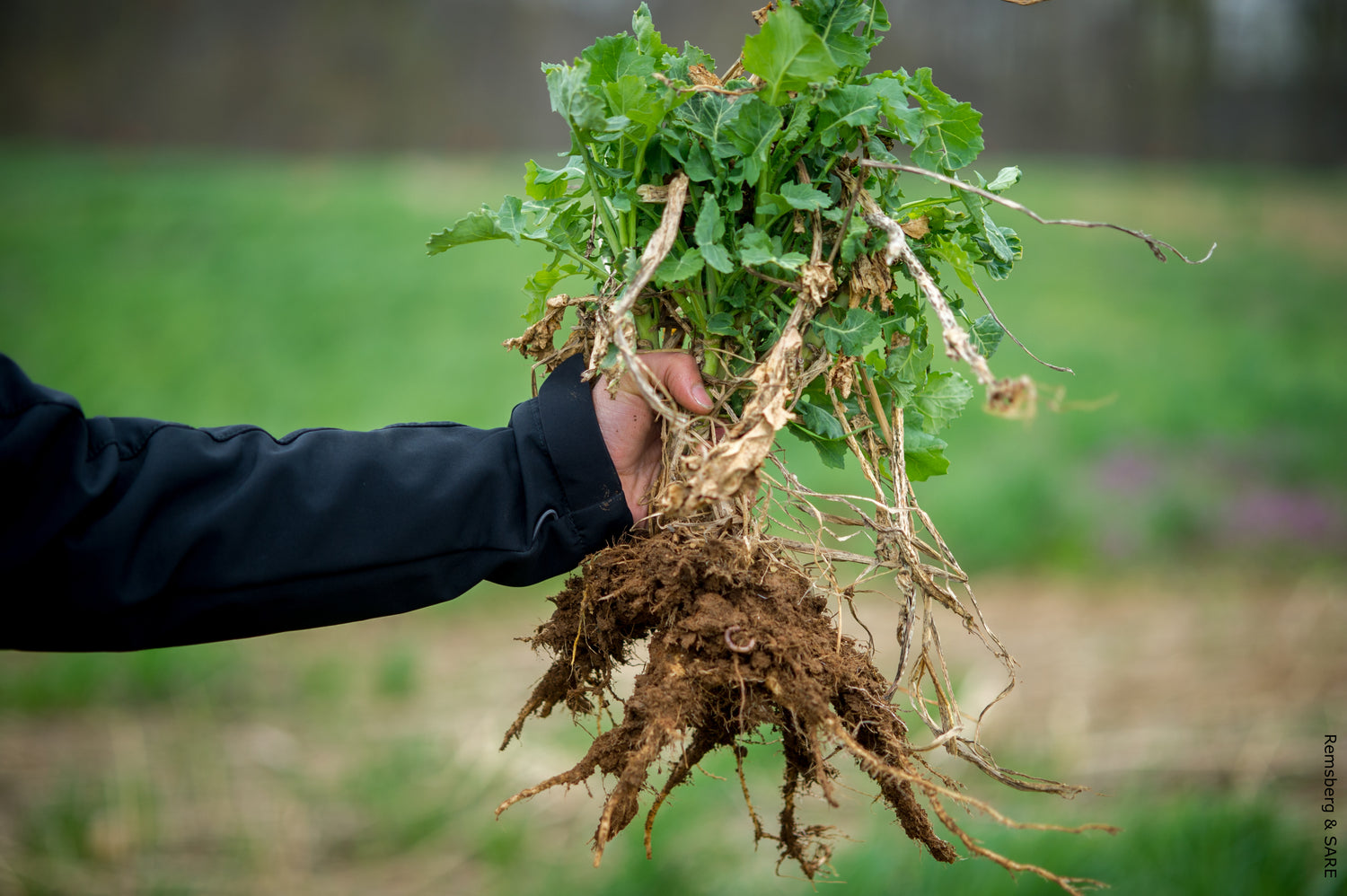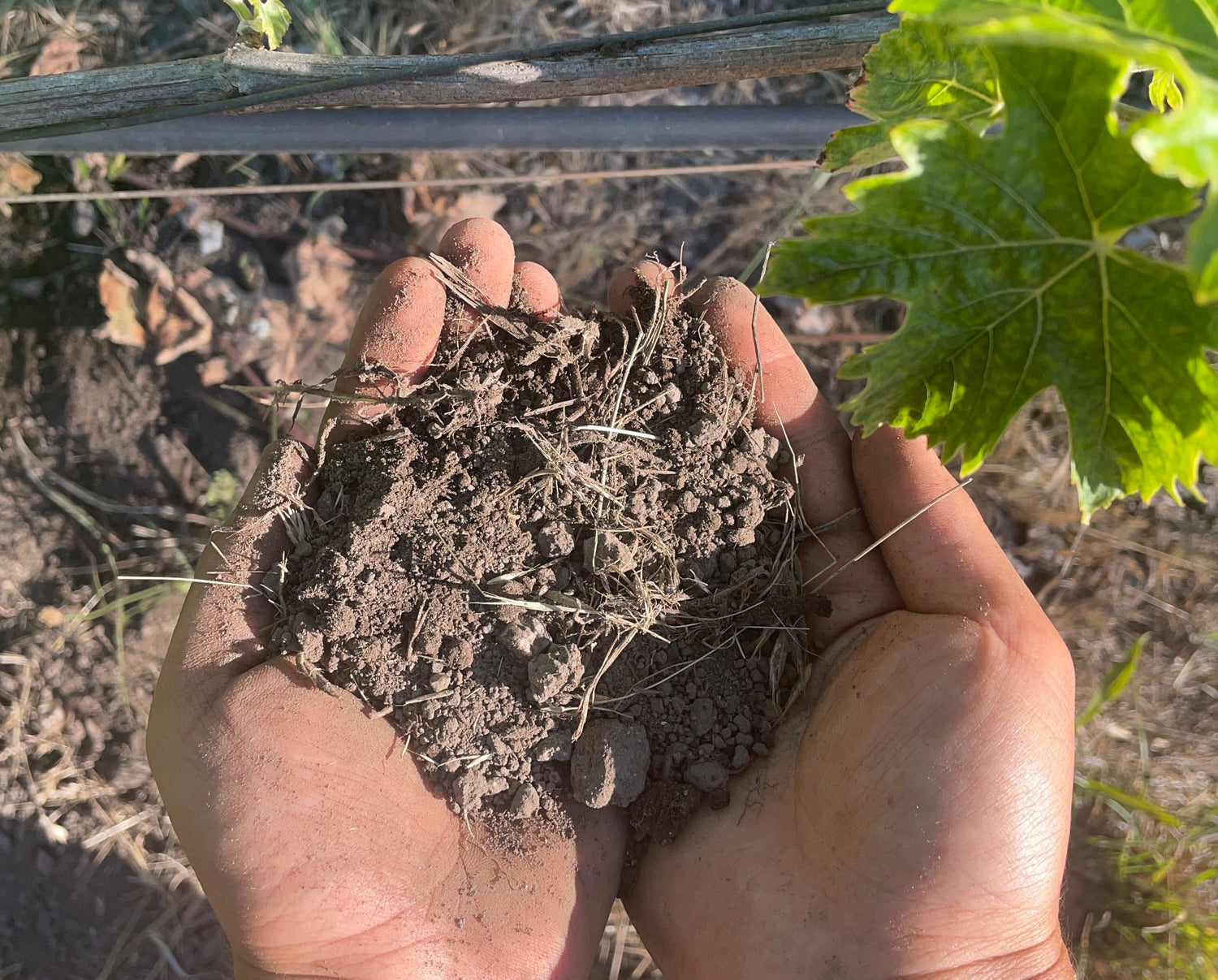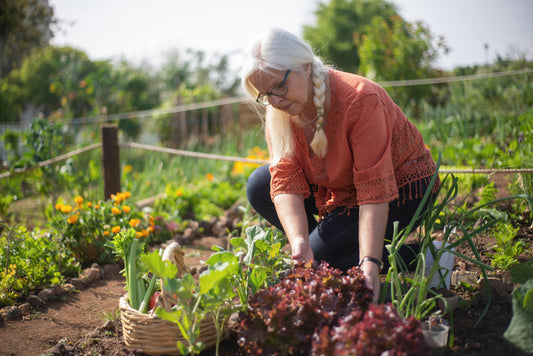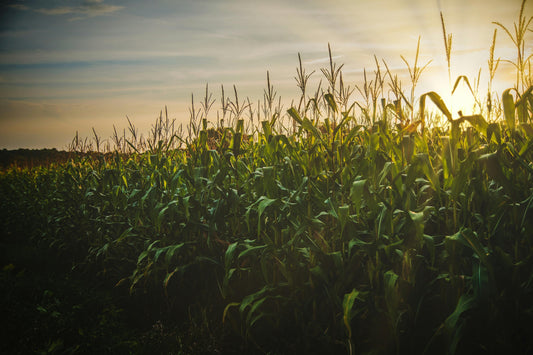Soil testing serves as the foundation for successful agriculture and gardening across diverse growing conditions, from backyard gardens to commercial farmland. Understanding your soil's chemical composition, pH levels, and nutrient availability is essential for optimal plant health, efficient resource use, and sustainable land management practices.
The Complete Guide to Soil Testing: Methods, Kits, and Professional Analysis (2025)
Soil testing determines nutrient levels, pH balance, and soil health indicators to guide fertilizer applications and soil amendments for optimal plant growth. Professional laboratory analysis provides the most accurate results, while DIY test kits offer convenient monitoring for basic parameters like pH and primary nutrients.
Table of Contents
- Understanding Soil Testing Fundamentals
- Types of Soil Tests and What They Measure
- DIY Soil Test Kits vs. Professional Laboratory Analysis
- Step-by-Step Soil Sampling Guide
- Interpreting Your Soil Test Results
- Common Soil Problems and Solutions
- When to Test Your Soil
- Cost-Benefit Analysis of Different Testing Methods
Understanding Soil Testing Fundamentals
Soil testing is the cornerstone of successful agriculture, gardening, and land management. Whether you're a home gardener trying to grow prize-winning tomatoes or a farmer managing hundreds of acres, understanding your soil's chemistry, structure, and biology is essential for optimal plant health and sustainable land use.
Why Soil Testing Matters
Soil is a complex ecosystem containing minerals, organic matter, water, air, and countless microorganisms. The health of this system directly impacts:
- Nutrient availability to plants
- Water retention and drainage characteristics
- pH balance affecting nutrient uptake
- Microbial activity supporting plant health
- Soil structure influencing root development
Without proper soil analysis, you're essentially farming or gardening blind, potentially wasting money on unnecessary amendments or missing critical deficiencies that could dramatically improve your results.
Types of Soil Tests and What They Measure
Basic Soil Tests
pH Testing
- Measures soil acidity/alkalinity (scale 0-14)
- Optimal range for most plants: 6.0-7.0
- Critical for nutrient availability
NPK Testing (Nitrogen, Phosphorus, Potassium)
- Primary macronutrients essential for plant growth
- Nitrogen: promotes leafy growth
- Phosphorus: supports root development and flowering
- Potassium: enhances disease resistance and overall plant health
Organic Matter Content
- Indicates soil fertility and structure
- Healthy soils typically contain 3-5% organic matter
- Affects water retention, nutrient cycling, and microbial activity
Advanced Soil Analysis
Micronutrient Testing
- Iron, manganese, zinc, copper, boron, molybdenum
- Often overlooked but critical for plant health
- Deficiencies can mimic macronutrient problems
Cation Exchange Capacity (CEC)
- Measures soil's ability to hold and exchange nutrients
- Higher CEC = better nutrient retention
- Influenced by clay content and organic matter
Soil Texture Analysis
- Determines sand, silt, and clay percentages
- Affects drainage, aeration, and nutrient retention
- Critical for irrigation and amendment planning
Biological Activity Tests
- Microbial biomass and diversity
- Enzyme activity levels
- Indicators of soil ecosystem health
DIY Soil Test Kits vs. Professional Laboratory Analysis
Home Test Kit Options
Basic pH Test Strips
- Cost: $5-15
- Accuracy: Moderate (±0.5 pH units)
- Best for: Quick pH checks, multiple site testing
- Limitations: pH only, subjective color interpretation
Multi-Parameter Test Kits
- Cost: $20-50
- Tests: pH, NPK, sometimes organic matter
- Accuracy: Variable, generally ±10-20%
- Best for: General soil health screening
- Popular brands: Rapitest, Sonkir, Environmental Concepts
Digital pH Meters
- Cost: $15-100
- Accuracy: High (±0.1 pH units with calibration)
- Best for: Precise pH monitoring over time
- Maintenance: Requires calibration and probe care
Electronic Multi-Meters
- Cost: $25-150
- Tests: pH, moisture, light, sometimes NPK
- Accuracy: Variable by parameter
- Best for: Ongoing monitoring, container gardening
Professional Laboratory Testing
Basic Soil Analysis Package
- Cost: $15-30 per sample
- Tests: pH, NPK, organic matter, basic recommendations
- Turnaround: 1-2 weeks
- Accuracy: High (laboratory-grade equipment)
Comprehensive Soil Analysis
- Cost: $40-80 per sample
- Tests: All basic parameters plus micronutrients, CEC, soil texture
- Includes: Detailed interpretation and amendment recommendations
- Best for: New gardens, problem diagnosis, precision agriculture
Specialized Testing
- Heavy metals: $30-60 (important near roads, industrial areas)
- Biological activity: $50-100 (soil health assessment)
- Contamination screening: $100-300 (environmental concerns)
When to Choose Each Method
Choose DIY Kits When:
- Budget is limited
- Need quick results
- Testing multiple locations
- Monitoring changes over time
- Soil problems are likely simple (pH, basic fertility)
Choose Professional Analysis When:
- Starting a new garden or farm
- Plants show unexplained problems
- Investing in expensive landscaping
- Need legally defensible results
- Soil has complex issues or contamination concerns
- Managing commercial agricultural operations
Step-by-Step Soil Sampling Guide
Proper sampling is crucial regardless of your testing method. Poor sampling technique can make even the most accurate laboratory analysis meaningless.
When to Sample
Best Timing:
- Spring: 2-4 weeks before planting
- Fall: After harvest, before soil amendments
- Avoid: Immediately after fertilizing, liming, or heavy rain
Sampling Technique
Equipment Needed:
- Clean sampling tools (soil probe, spade, or trowel)
- Clean bucket for mixing
- Sample bags or containers
- Labels and permanent marker
Step-by-Step Process:
- Identify sampling areas - Test different zones separately (vegetable garden, lawn, flower beds)
- Take multiple sub-samples - Collect 10-15 samples from each area in a random pattern
- Proper depth - Sample 4-6 inches deep for lawns, 6-8 inches for gardens
- Mix thoroughly - Combine all sub-samples from each area in a clean bucket
- Remove debris - Pick out stones, roots, and organic matter
- Final sample - Take 1-2 cups of mixed soil for testing
- Label clearly - Include location, date, and any relevant notes
Common Sampling Mistakes
- Taking samples from only one location
- Sampling too shallow or too deep
- Including mulch or surface debris
- Using dirty tools or containers
- Sampling immediately after rain or irrigation
- Mixing samples from different soil types or management areas
Interpreting Your Soil Test Results
Understanding your soil test results is where many people struggle. Here's how to decode the most important parameters:
pH Interpretation
pH Scale Understanding:
- Below 6.0: Acidic - may limit nutrient availability
- 6.0-7.0: Optimal for most plants
- Above 7.5: Alkaline - may cause micronutrient deficiencies
Regional Considerations:
- Eastern US: Often naturally acidic, may need lime
- Western US: Often alkaline, may need sulfur
- Coastal areas: Salt accumulation can affect pH
NPK Levels
Nitrogen (N):
- Low: <10 ppm - Yellowing leaves, poor growth
- Medium: 10-25 ppm - Adequate for most plants
- High: >25 ppm - Risk of excessive vegetative growth
Phosphorus (P):
- Low: <15 ppm - Poor flowering, weak roots
- Medium: 15-50 ppm - Sufficient for healthy growth
- High: >50 ppm - May interfere with micronutrient uptake
Potassium (K):
- Low: <100 ppm - Disease susceptibility, poor fruit quality
- Medium: 100-200 ppm - Good for general plant health
- High: >200 ppm - Usually not problematic
Organic Matter Assessment
Interpretation:
- Below 2%: Poor soil health, needs organic amendments
- 2-4%: Moderate, beneficial to increase
- Above 5%: Excellent soil health, maintain current practices
Common Soil Problems and Solutions
Acidic Soil (Low pH)
Symptoms:
- Poor plant growth despite adequate fertilization
- Yellowing leaves
- Increased disease susceptibility
- Moss growth in lawns
Solutions:
- Lime application: Calcitic lime for calcium, dolomitic lime if magnesium is also low
- Application rate: Follow soil test recommendations (typically 25-50 lbs per 1,000 sq ft)
- Timing: Fall application preferred, effects take 6-12 months
- Organic options: Wood ash (use sparingly), bone meal
Alkaline Soil (High pH)
Symptoms:
- Iron chlorosis (yellowing between leaf veins)
- Poor nutrient uptake despite adequate fertilization
- Stunted growth
Solutions:
- Sulfur application: Elemental sulfur most effective, takes time to work
- Organic acids: Compost, peat moss, pine needles
- Iron supplements: Chelated iron for quick greening
- Plant selection: Choose alkaline-tolerant varieties
Nutrient Deficiencies
Nitrogen Deficiency:
- Quick fix: Water-soluble fertilizer
- Long-term: Compost, aged manure, cover crops
- Organic sources: Blood meal, fish emulsion, alfalfa meal
Phosphorus Deficiency:
- Symptoms: Purple leaf tinge, poor flowering
- Solutions: Bone meal, rock phosphate, compost
- Note: High pH can lock up phosphorus
Potassium Deficiency:
- Symptoms: Brown leaf edges, poor disease resistance
- Solutions: Wood ash, kelp meal, greensand
- Timing: Fall application preferred
Poor Soil Structure
Compacted Soil:
- Identification: Water pools on surface, difficult to dig
- Solutions: Core aeration, organic matter addition, avoid traffic when wet
- Long-term: Regular compost application, cover crops
Sandy Soil:
- Problems: Poor water and nutrient retention
- Solutions: Organic matter addition, slow-release fertilizers
- Amendments: Compost, aged manure, biochar
Heavy Clay Soil:
- Problems: Poor drainage, difficult root penetration
- Solutions: Organic matter, raised beds, drainage improvement
- Avoid: Adding sand without organic matter (creates concrete-like soil)
When to Test Your Soil
Testing Schedule
New Properties:
- Test immediately upon acquisition
- Retest after first year of management
- Establish baseline for future comparisons
Established Gardens:
- Annual testing: High-maintenance areas, commercial operations
- Every 2-3 years: Home gardens with stable management
- Every 3-5 years: Low-maintenance landscapes
Trigger Events for Testing:
- Plant health problems arise
- Before major landscape investments
- After significant weather events
- When changing management practices
- Before planting expensive or sensitive crops
Seasonal Considerations
Spring Testing:
- Best for planning current season amendments
- Soil temperature above 50°F for accurate results
- Allow 4-6 weeks for amendment incorporation
Fall Testing:
- Ideal for lime applications (winter breakdown)
- Plan for next season's garden
- Assess current season's management effectiveness
Cost-Benefit Analysis of Different Testing Methods
DIY Testing Economics
Initial Investment:
- Basic pH kit: $10-20
- Multi-parameter kit: $30-50
- Digital meters: $50-150
- Annual replacement/calibration: $20-50
Per-Test Costs:
- Test strips: $0.50-1.00 per test
- Digital readings: Essentially free after initial investment
- Reagent-based kits: $2-5 per test
Break-Even Analysis:
- If testing more than 10-15 samples annually, DIY becomes cost-effective
- Best for ongoing monitoring and multiple locations
Professional Testing Economics
Per-Sample Costs:
- Basic analysis: $15-30
- Comprehensive analysis: $40-80
- Specialized tests: $50-300
Hidden Value:
- Expert interpretation included
- Specific amendment recommendations
- Legal documentation if needed
- Access to extension service support
When Professional Testing Pays:
- Prevents expensive amendment mistakes
- Identifies problems DIY tests might miss
- One comprehensive test can guide 2-3 years of management
- Essential for commercial operations
ROI Calculations
Home Garden (1,000 sq ft):
- Professional test: $30 every 3 years = $10/year
- Prevents over-fertilization: Saves $20-50 annually
- Improves plant health: Reduces replacement costs $50-100/year
- Net benefit: $60-140 annually
Small Farm (5 acres):
- Comprehensive testing: $200 every 2 years = $100/year
- Optimized fertilization: Saves $300-800 annually
- Increased yields: $500-2,000 additional revenue
- Net benefit: $700-2,700 annually
Choosing the Right Soil Test Kit
For Beginners
Recommended: Basic pH and NPK test kit ($20-30)
- Simple to use
- Covers most common issues
- Good learning tool
- Examples: Rapitest 4-Way Analyzer, Environmental Concepts Professional Kit
For Experienced Gardeners
Recommended: Digital pH meter + professional lab test combination
- Digital meter for ongoing monitoring ($30-60)
- Professional analysis every 2-3 years ($30-50)
- Best of both worlds approach
For Commercial Operations
Recommended: Professional laboratory analysis exclusively
- Grid sampling for large areas
- GPS-mapped results
- Variable rate application recommendations
- Regulatory compliance documentation
Advanced Soil Health Indicators
Biological Testing
Modern soil science recognizes that chemical analysis alone doesn't tell the whole story. Biological indicators provide insight into soil ecosystem health:
Soil Respiration:
- Measures microbial activity
- Indicates organic matter decomposition rate
- Higher respiration = more active soil biology
Microbial Biomass:
- Total living microbial population
- Correlates with nutrient cycling capacity
- Target: 300-500 mg microbial biomass per kg soil
Enzyme Activity:
- Indicates specific biological processes
- Phosphatase activity shows phosphorus availability
- Dehydrogenase indicates overall microbial activity
Physical Testing
Soil Penetration Resistance:
- Measures compaction levels
- Critical for root development
- Target: <300 psi for healthy root growth
Water Infiltration Rate:
- Measures drainage capacity
- Prevents waterlogging and runoff
- Target: >0.5 inches per hour
Aggregate Stability:
- Indicates soil structure quality
- Affects water retention and aeration
- Higher stability = better soil health
State-Specific Soil Testing Guide
California Soil Testing
Dominant Soil Types:
- Central Valley: Mollisols and Vertisols (heavy clay, high fertility)
- Coastal Regions: Alfisols (well-drained, moderate fertility)
- Desert Areas: Aridisols (low organic matter, high pH, salt accumulation)
- Mountain Areas: Inceptisols (young soils, variable characteristics)
Common Soil Issues:
- pH Range: 6.5-8.5 (alkaline tendency)
- Salinity: Major issue in Central Valley and desert regions
- Boron toxicity: Common in irrigated areas
- Iron deficiency: Widespread due to high pH
- Low organic matter: <2% in many agricultural areas
Best Test Kits for California:
| Test Kit | Price | Best For | Specific Advantages |
|---|---|---|---|
| LaMotte Garden Kit | $35-45 | General gardening | Tests for alkaline soils, includes iron |
| Rapitest Digital pH Meter | $25-35 | Ongoing pH monitoring | Essential for California's variable pH |
| Professional Lab (UC Davis) | $25-40 | Comprehensive analysis | California-specific recommendations |
| Hanna EC/pH Combo Meter | $60-80 | Salt-affected soils | Critical for salinity monitoring |
California-Specific Testing Priorities:
- Salinity (EC) testing - Essential in Central Valley
- Boron levels - Test annually in irrigated areas
- Iron availability - Critical for fruit trees and vegetables
- Sulfur content - Often deficient in organic systems
- Sodium absorption ratio (SAR) - Important for soil structure
Recommended Labs:
- UC Davis Analytical Laboratory (530-752-0147)
- A&L Western Laboratories
- Waypoint Analytical (California locations)
Texas Soil Testing
Dominant Soil Types:
- East Texas: Ultisols (acidic, clay-rich, iron-rich)
- Central Texas: Mollisols (high fertility, limestone-derived)
- West Texas: Aridisols (alkaline, low organic matter)
- Gulf Coast: Vertisols (heavy clay, shrink-swell properties)
Common Soil Issues:
- pH Range: 5.5-8.2 (varies dramatically by region)
- Iron chlorosis: Severe in alkaline areas
- Phosphorus fixation: In high pH soils
- Compaction: Heavy clay soils statewide
- Salt accumulation: Coastal and irrigated areas
Best Test Kits for Texas:
| Test Kit | Price | Best For | Regional Focus |
|---|---|---|---|
| Texas A&M Basic Test | $12-18 | Agricultural planning | State-specific recommendations |
| Sonkir 4-in-1 Meter | $20-30 | East Texas gardens | Good for acidic soil monitoring |
| Environmental Concepts Pro Kit | $45-60 | Comprehensive home testing | Handles wide pH range |
| Hach Iron Test Kit | $35-50 | Central/West Texas | Specialized iron deficiency testing |
Texas-Specific Testing Priorities:
- Regional pH variation - Critical to test locally
- Iron and micronutrients - Essential in limestone areas
- Nitrogen management - Variable based on rainfall
- Organic matter - Generally low statewide
- Salinity - Coastal and irrigation concerns
Regional Recommendations:
- East Texas: Test for pH, aluminum toxicity, iron sufficiency
- Central Texas: Focus on pH buffering, iron availability, phosphorus
- West Texas: Salinity, low organic matter, micronutrient deficiencies
- Gulf Coast: Salinity, heavy metal contamination, drainage
Recommended Labs:
- Texas A&M AgriLife Extension Soil Testing Lab (979-845-4816)
- Stephen F. Austin State University Soil Testing Lab
- Waters Agricultural Laboratories
Oregon Soil Testing
Dominant Soil Types:
- Willamette Valley: Mollisols (fertile prairie soils)
- Coastal Range: Andisols (volcanic origin, high organic matter)
- Eastern Oregon: Aridisols (dry, alkaline conditions)
- Cascade Mountains: Inceptisols (young volcanic soils)
Common Soil Issues:
- pH Range: 5.0-7.5 (generally acidic west, alkaline east)
- High rainfall leaching: Western Oregon nutrient loss
- Aluminum toxicity: Potential in very acidic soils
- Micronutrient deficiencies: Boron, zinc common
- Seasonal waterlogging: Winter drainage issues
Best Test Kits for Oregon:
| Test Kit | Price | Best For | Oregon Advantage |
|---|---|---|---|
| OSU Extension Test Kit | $15-25 | Regional accuracy | Oregon-specific interpretations |
| Rapitest Premium Kit | $30-40 | Acidic soil testing | Excellent for western Oregon |
| LaMotte Smart Colorimeter | $250-350 | Professional growers | High accuracy for specialty crops |
| Kelway pH Meter | $45-65 | Continuous monitoring | Waterproof for wet conditions |
Oregon-Specific Testing Priorities:
- pH management - Critical for acid-sensitive crops
- Drainage assessment - Winter waterlogging prevention
- Micronutrient panels - Boron, zinc, manganese focus
- Organic matter maintenance - High rainfall depletes nutrients
- Soil structure - Clay content affects workability
Regional Variations:
- Western Oregon: Acidic, high organic matter, potential aluminum issues
- Eastern Oregon: Alkaline, low organic matter, salinity in irrigated areas
- Coastal Areas: Salt spray effects, unique micronutrients needs
- Mountain Soils: Variable fertility, erosion concerns
Recommended Labs:
- Oregon State University Central Service Lab (541-737-5843)
- Brookside Laboratories (Oregon office)
- Western Laboratories (Portland area)
Florida Soil Testing
Dominant Soil Types:
- Sandy Entisols (90% of state) - Low fertility, high drainage
- Organic Histosols (Everglades) - High organic matter, unique chemistry
- Spodosols (Central Florida) - Acidic with hardpan layers
- Alfisols (Northern Florida) - Higher clay content, better fertility
Common Soil Issues:
- Extremely sandy texture: Poor nutrient retention
- Low pH: 4.5-6.5 typical range
- Micronutrient deficiencies: Especially manganese, iron, boron
- Rapid nutrient leaching: High rainfall, sandy soils
- Nematode pressure: Warm, humid conditions
Best Test Kits for Florida:
| Test Kit | Price | Best For | Florida Focus |
|---|---|---|---|
| UF/IFAS Soil Test | $7-12 | Most economical | Florida-specific crop recommendations |
| Lamotte Garden Kit Deluxe | $50-70 | Sandy soil specialization | Better accuracy in low-CEC soils |
| Hanna pH/EC Combo | $80-120 | Citrus growers | Critical for specialized crops |
| Professional Nematode Test | $25-45 | Problem diagnosis | Essential Florida pest |
Florida-Specific Testing Priorities:
- Frequent testing - Nutrients leach rapidly (test 2-3 times/year)
- Micronutrient emphasis - Manganese, iron, boron critical
- pH buffering - Liming needs assessment
- Organic matter management - Depletes rapidly in heat
- Nematode assays - Often overlooked soil health factor
Recommended Labs:
- University of Florida Extension Soil Testing Lab (352-392-1950)
- A&L Southeastern Laboratories
- Waters Agricultural Laboratories (Florida locations)
New York Soil Testing
Dominant Soil Types:
- Alfisols (Southern NY) - Fertile, well-drained soils
- Spodosols (Adirondacks) - Acidic, low fertility forest soils
- Inceptisols (Hudson Valley) - Variable fertility, good structure
- Entisols (Long Island) - Sandy, well-drained coastal plains
Common Soil Issues:
- Acidic conditions: pH 4.5-6.0 common statewide
- Aluminum toxicity: In very acidic forest soils
- Winter freeze-thaw: Affects soil structure
- Heavy metal contamination: Urban and industrial areas
- Compaction: From equipment and freeze-thaw cycles
Best Test Kits for New York:
| Test Kit | Price | Best For | NY Specific |
|---|---|---|---|
| Cornell Soil Test | $12-20 | Regional accuracy | NY-specific lime recommendations |
| Rapitest 4-Way Analyzer | $15-25 | Home gardeners | Good for acidic soil range |
| Professional Heavy Metal Screen | $45-85 | Urban gardens | Important contamination check |
| Logan Labs Complete Test | $35-55 | Comprehensive analysis | Detailed micronutrient panel |
New York-Specific Testing Priorities:
- Lime requirement testing - Critical for acidic soils
- Heavy metal screening - Important in urban areas
- Organic matter assessment - Cold climate considerations
- Aluminum levels - Toxicity potential in acidic soils
- Seasonal timing - Spring testing after soil thaws
Recommended Labs:
- Cornell Nutrient Analysis Laboratory (607-255-4540)
- Agro-One Soils Laboratory (Ithaca, NY)
- Northeast Laboratories (Maine, services NY)
Comprehensive Test Kit Comparison Tables
Basic pH Test Kit Comparison
| Brand/Model | Price Range | pH Range | Accuracy | Ease of Use | Best For |
|---|---|---|---|---|---|
| Rapitest pH Tester | $8-12 | 4.0-8.0 | ±0.3 pH | Very Easy | Beginners |
| Environmental Concepts | $15-20 | 3.5-9.0 | ±0.2 pH | Easy | General use |
| LaMotte pH Test Kit | $25-35 | 4.0-9.5 | ±0.1 pH | Moderate | Precision needed |
| Sonkir Digital Meter | $15-25 | 3.5-9.0 | ±0.1 pH | Easy | Digital preference |
| Kelway pH Tester | $45-65 | 3.5-9.0 | ±0.1 pH | Very Easy | Professional use |
NPK Test Kit Comparison
| Brand/Model | Price | N Range (ppm) | P Range (ppm) | K Range (ppm) | Accuracy | Notes |
|---|---|---|---|---|---|---|
| Rapitest NPK | $12-18 | 0-50 | 0-100 | 0-200 | ±15% | Color charts |
| Environmental Concepts | $35-50 | 0-100 | 0-150 | 0-300 | ±10% | Liquid reagents |
| LaMotte NPK Plus | $60-85 | 0-150 | 0-200 | 0-400 | ±8% | Professional grade |
| Hach Test Kit | $150-200 | 0-200 | 0-250 | 0-500 | ±5% | Laboratory quality |
Digital Meter Comparison
| Brand/Model | Price | Parameters | Battery Life | Calibration | Durability | Best Use |
|---|---|---|---|---|---|---|
| Sonkir 4-in-1 | $20-30 | pH, NPK, Light, Moisture | 1 year | None needed | Moderate | Home gardens |
| XLUX T10 | $15-25 | pH, Moisture, Light | 6 months | Manual | Low | Basic monitoring |
| Bluelab Combo | $180-220 | pH, EC, Temperature | 1 year | Digital | High | Commercial |
| Hanna HI-9814 | $120-150 | pH, EC, TDS | 500 hours | Automatic | High | Professional |
| Apera PC60 | $200-250 | pH, EC, Salinity, TDS | 2000 hours | 5-point | Very High | Laboratory |
Professional Laboratory Comparison
National Laboratory Services
| Laboratory | Basic Test Cost | Comprehensive Cost | Turnaround Time | Specialties | Coverage |
|---|---|---|---|---|---|
| A&L Great Lakes | $15-25 | $45-65 | 3-5 days | Agriculture, turf | Midwest focus |
| Brookside Labs | $18-30 | $50-75 | 5-7 days | Specialty crops | National |
| Logan Labs | $35-55 | $75-125 | 7-10 days | Biological testing | Organic focus |
| Waypoint Analytical | $20-35 | $55-85 | 3-7 days | Environmental | Multi-state |
| Waters Agricultural | $12-22 | $40-60 | 5-10 days | Traditional ag | Southeast |
University Extension Labs
| State/University | Basic Cost | Services | Contact | Specialties |
|---|---|---|---|---|
| UC Davis | $25-40 | Complete soil analysis | 530-752-0147 | Wine grapes, tree crops |
| Texas A&M | $12-18 | Standard soil test | 979-845-4816 | Cotton, corn, cattle |
| Oregon State | $15-25 | Regional recommendations | 541-737-5843 | Berries, nursery crops |
| Cornell (NY) | $12-20 | Cold climate focus | 607-255-4540 | Dairy, vegetables |
| UF/IFAS (Florida) | $7-12 | Sandy soil specialty | 352-392-1950 | Citrus, vegetables |
| Penn State | $9-15 | Mushroom, dairy focus | 814-863-0841 | Mushroom compost |
Soil Amendment Reference Tables
pH Adjustment Materials
| Amendment | Application Rate | Time to Effect | pH Change | Cost per lb | Notes |
|---|---|---|---|---|---|
| Calcitic Lime | 25-50 lbs/1000 sq ft | 6-12 months | +1.0-1.5 | $0.05-0.15 | Standard limestone |
| Dolomitic Lime | 25-50 lbs/1000 sq ft | 6-12 months | +1.0-1.5 | $0.08-0.20 | Adds magnesium |
| Hydrated Lime | 15-25 lbs/1000 sq ft | 2-4 months | +1.5-2.0 | $0.15-0.30 | Fast-acting, caustic |
| Wood Ash | 10-15 lbs/1000 sq ft | 3-6 months | +0.5-1.0 | Free-0.25 | High potassium |
| Elemental Sulfur | 5-20 lbs/1000 sq ft | 3-12 months | -0.5-1.5 | $0.50-1.00 | Slow acidification |
| Iron Sulfate | 2-5 lbs/1000 sq ft | 1-3 months | -0.3-0.8 | $0.75-1.25 | Fast acidification |
| Aluminum Sulfate | 3-8 lbs/1000 sq ft | 1-2 months | -0.5-1.2 | $0.60-1.00 | Very fast acting |
Organic Matter Sources
| Material | C:N Ratio | Application Rate | Decomposition Time | Cost per cu yd | Benefits |
|---|---|---|---|---|---|
| Compost | 15-25:1 | 2-4 inches | 6-18 months | $25-45 | Slow nutrient release |
| Aged Manure | 10-20:1 | 1-3 inches | 3-12 months | $15-35 | Quick nutrient boost |
| Peat Moss | 50-70:1 | 1-2 inches | 2-5 years | $8-15 | Acidifies, retains moisture |
| Leaf Mold | 30-80:1 | 2-4 inches | 12-24 months | Free-10 | Improves structure |
| Biochar | >100:1 | 0.5-1 inch | 50+ years | $200-500 | Carbon sequestration |
| Coir | 75-100:1 | 1-2 inches | 1-3 years | $40-80 | Sustainable alternative |
Nutrient Deficiency Diagnostic Table
| Nutrient | Early Symptoms | Advanced Symptoms | Soil Test Level | Quick Fix | Long-term Solution |
|---|---|---|---|---|---|
| Nitrogen | Lower leaves yellow | Stunted growth, pale color | <10 ppm | Liquid fertilizer | Compost, cover crops |
| Phosphorus | Purple leaf tinge | Poor root development | <15 ppm | Bone meal | Rock phosphate |
| Potassium | Leaf edge burn | Poor disease resistance | <100 ppm | Wood ash | Kelp meal, greensand |
| Iron | Yellow between veins | White/yellow new growth | <4.5 ppm | Chelated iron | Lower pH, organic matter |
| Magnesium | Older leaves yellow | Interveinal chlorosis | <50 ppm | Epsom salt | Dolomitic lime |
| Calcium | Blossom end rot | Stunted root growth | <200 ppm | Gypsum | Calcitic lime |
| Sulfur | Overall yellowing | Similar to nitrogen def. | <10 ppm | Elemental sulfur | Gypsum, organic matter |
| Boron | Brittle leaves | Heart rot, hollow stems | <0.5 ppm | Borax solution | Organic matter |
| Zinc | Interveinal yellowing | Shortened internodes | <1.0 ppm | Zinc sulfate | Organic amendments |
| Manganese | Interveinal chlorosis | Necrotic spots | <5 ppm | Manganese sulfate | Lower pH |
Regional Soil Testing Resources
Extension Service Contacts
| State | Service | Phone | Website | Soil Test Cost |
|---|---|---|---|---|
| Alabama | Auburn Extension | 334-844-4444 | aces.edu | $8-15 |
| Arizona | U of A Extension | 520-621-7205 | extension.arizona.edu | $12-20 |
| Arkansas | U of A System | 501-671-2000 | uaex.edu | $8-12 |
| California | UC ANR | 530-752-0147 | ucanr.edu | $25-40 |
| Colorado | CSU Extension | 970-491-6281 | extension.colostate.edu | $15-25 |
| Florida | UF/IFAS | 352-392-1950 | sfyl.ifas.ufl.edu | $7-12 |
| Georgia | UGA Extension | 706-542-3824 | extension.uga.edu | $8-15 |
| Illinois | U of I Extension | 217-333-2007 | extension.illinois.edu | $15-25 |
| Iowa | ISU Extension | 515-294-1923 | extension.iastate.edu | $12-18 |
| Kansas | K-State Research | 785-532-6147 | ksre.k-state.edu | $12-20 |
| Michigan | MSU Extension | 888-678-3464 | canr.msu.edu | $18-25 |
| New York | Cornell Cooperative | 607-255-4540 | cce.cornell.edu | $12-20 |
| Ohio | OSU Extension | 614-292-6181 | ohioline.osu.edu | $15-22 |
| Oregon | OSU Extension | 541-737-5843 | extension.oregonstate.edu | $15-25 |
| Texas | AgriLife Extension | 979-845-4816 | agrilifeextension.tamu.edu | $12-18 |
| Washington | WSU Extension | 509-335-2511 | extension.wsu.edu | $18-28 |
Emerging Trends in Soil Testing
Technology Integration
Smartphone Apps:
- Photo-based analysis for pH and nutrients
- GPS mapping of test results
- Connection to extension databases
IoT Sensors:
- Continuous monitoring of pH, moisture, temperature
- Real-time alerts for optimal conditions
- Data logging for trend analysis
Drone-Based Testing:
- Large-scale soil mapping
- Variable rate prescription mapping
- Integration with precision agriculture systems
Sustainability Focus
Carbon Sequestration Testing:
- Measuring soil's carbon storage capacity
- Important for climate change mitigation
- Increasingly required for carbon credit programs
Biodiversity Assessment:
- DNA sequencing of soil microbes
- Functional diversity measurements
- Integration with regenerative agriculture practices
Conclusion
Soil testing is an investment in the long-term health and productivity of your land, whether you're managing a small backyard garden or thousands of acres. The key to success lies in choosing the appropriate testing method for your needs, understanding how to interpret results, and taking action based on those findings.
For most home gardeners, a combination approach works best: use DIY kits for regular monitoring and professional analysis every few years for comprehensive assessment. Commercial operations benefit from regular professional testing with GPS mapping and precision application recommendations.
Remember that soil testing is not a one-time activity but an ongoing process of monitoring and adjustment. As you implement changes based on test results, continue testing to track progress and fine-tune your soil management strategy.
The small investment in proper soil testing typically pays dividends many times over in improved plant health, increased yields, reduced input costs, and environmental stewardship. Whether you choose a simple pH test kit or comprehensive laboratory analysis, the important thing is to start testing and use the results to make informed decisions about your soil management practices.
Soil Testing Troubleshooting Guide
Common Testing Problems and Solutions
| Problem | Cause | Solution | Prevention |
|---|---|---|---|
| Inconsistent pH readings | Mixed soil types in sample | Sample areas separately | Map different soil zones |
| NPK results seem high but plants struggle | pH blocking nutrients | Test pH first, adjust if needed | Regular pH monitoring |
| Test kit colors hard to read | Poor lighting, color blindness | Use digital meters or lab tests | Invest in better equipment |
| Wildly different results from same area | Contaminated samples | Use clean tools, fresh samples | Clean equipment between tests |
| Lab results don't match field conditions | Poor sampling technique | Follow proper sampling protocol | Training on sampling methods |
Interpretation Red Flags
When to Retest:
- pH below 5.0 or above 8.5
- Any nutrient level in extreme ranges
- Results don't match plant symptoms
- Major discrepancy between tests
- Suspected contamination issues
When to Seek Professional Help:
- Persistent plant problems despite amendments
- Suspected heavy metal contamination
- Legal or regulatory requirements
- Complex commercial operations
- Environmental concerns
Advanced Testing Methods
Precision Agriculture Testing
Grid Sampling:
- GPS-mapped sampling points
- Variable rate fertilizer applications
- Yield mapping correlation
- Cost: $8-15 per acre
Zone Management:
- Soil electrical conductivity mapping
- Elevation and slope considerations
- Historical yield data integration
- Management zone delineation
Biological Activity Assessment
| Test Type | Cost | Information Provided | Best For |
|---|---|---|---|
| Soil Respiration | $35-50 | Microbial activity level | Organic systems |
| Microbial Biomass | $45-65 | Total living microbes | Soil health monitoring |
| PLFA Analysis | $150-200 | Microbial community structure | Research applications |
| Enzyme Activity | $25-40 per enzyme | Specific biological functions | Problem diagnosis |
| Nematode Assay | $85-125 | Soil food web health | Integrated pest management |
Contamination Testing
Heavy Metals Panel:
- Lead, cadmium, mercury, arsenic
- Cost: $45-85
- Important near roads, industrial areas
- Required for urban agriculture
Organic Contaminants:
- Pesticide residues
- Petroleum products
- Industrial solvents
- Cost: $100-300 per analysis
Seasonal Testing Calendar
Spring Testing (March-May)
- Priority: pH, basic nutrients
- Purpose: Growing season preparation
- Timeline: 4-6 weeks before planting
- Best for: Annual crops, new gardens
Summer Testing (June-August)
- Priority: Moisture, pH monitoring
- Purpose: Mid-season adjustments
- Timeline: Peak growing period
- Best for: Ongoing management
Fall Testing (September-November)
- Priority: Comprehensive analysis
- Purpose: Next season planning
- Timeline: Post-harvest assessment
- Best for: Amendment applications
Winter Testing (December-February)
- Priority: Planning and research
- Purpose: Laboratory analysis timing
- Timeline: Reduced lab demand
- Best for: Cost-effective testing
Cost-Effectiveness Analysis
Home Garden ROI (1,000 sq ft)
| Scenario | Annual Cost | Savings | Net Benefit |
|---|---|---|---|
| No Testing | $0 | $0 | -$150 (poor yields) |
| DIY Basic | $25 | $75 | $50 |
| Professional Bi-annual | $40 | $125 | $85 |
| Professional Annual | $75 | $175 | $100 |
Small Farm Analysis (5 acres)
| Testing Level | Cost | Yield Increase | Input Savings | Net ROI |
|---|---|---|---|---|
| Basic NPK | $150 | $800 | $300 | 733% |
| Comprehensive | $400 | $1,500 | $600 | 525% |
| Precision Ag | $800 | $2,200 | $900 | 388% |
Future Trends in Soil Testing
Emerging Technologies
Spectroscopy-Based Testing:
- Near-infrared (NIR) analyzers
- X-ray fluorescence (XRF) portable units
- Real-time field analysis capability
- Cost reduction over time
Smartphone Integration:
- App-based color analysis
- Cloud data storage and analysis
- GPS mapping integration
- Crowd-sourced soil databases
Biosensor Development:
- Living soil sensors
- Microbial activity indicators
- Real-time nutrient monitoring
- Internet of Things (IoT) integration
Sustainability Focus
Carbon Credit Testing:
- Soil organic carbon measurement
- Carbon sequestration verification
- Climate impact assessment
- Market-driven testing demand
Regenerative Agriculture Metrics:
- Soil health indicators
- Biodiversity measurements
- Ecosystem service quantification
- Holistic management assessment
Quality Assurance in Soil Testing
Laboratory Certification
Important Certifications:
- ISO 17025 accreditation
- Soil Science Society of America standards
- State regulatory compliance
- Proficiency testing participation
What to Look For:
- Published quality control procedures
- Regular calibration schedules
- Blind sample testing
- Certified technician training
Home Test Kit Validation
Accuracy Verification:
- Compare results with professional labs
- Test known standard solutions
- Use multiple kits from different brands
- Document and track results over time
Best Practices:
- Follow instructions exactly
- Store kits properly
- Check expiration dates
- Use distilled water for dilutions
Glossary of Soil Testing Terms
| Term | Definition | Typical Range | Importance |
|---|---|---|---|
| CEC | Cation Exchange Capacity - soil's ability to hold nutrients | 5-40 meq/100g | Higher = better nutrient retention |
| EC | Electrical Conductivity - measures salt content | 0-4 dS/m | >2 indicates salinity problems |
| SAR | Sodium Absorption Ratio - sodium vs calcium/magnesium | 0-15 | >13 causes soil structure problems |
| Base Saturation | Percentage of CEC filled with basic cations | 50-85% | Indicates nutrient balance |
| Buffer pH | Soil's resistance to pH change | Varies | Determines lime requirement |
| Organic Matter | Decomposed plant/animal material | 1-8% | Critical for soil health |
| Bulk Density | Soil weight per unit volume | 1.0-1.8 g/cm³ | Higher = more compaction |
| Porosity | Percentage of soil volume that is pore space | 30-60% | Affects air and water movement |
Emergency Soil Problem Diagnosis
Rapid Assessment Protocol
Visual Inspection:
- Plant symptoms (chlorosis, necrosis, stunting)
- Soil color and structure
- Drainage characteristics
- Surface crusting or compaction
Quick Field Tests:
- pH strip test (5 minutes)
- Percolation test (1 hour)
- Soil texture jar test (24 hours)
- Electrical conductivity if available
Priority Laboratory Tests:
- Complete soil analysis if budget allows
- Heavy metal screen if contamination suspected
- Nematode assay if biological problems suspected
- Salinity panel if salt damage visible
Critical Action Thresholds
| Parameter | Action Level | Immediate Response | Follow-up |
|---|---|---|---|
| pH | <4.5 or >8.5 | Emergency liming/acidification | Monthly monitoring |
| EC | >4 dS/m | Leaching, drainage improvement | Bi-weekly testing |
| Lead | >400 ppm | Stop food production | Professional remediation |
| Sodium | SAR >15 | Gypsum application | Quarterly monitoring |
Professional Development Resources
Certification Programs
Certified Crop Advisor (CCA):
- International certification
- Continuing education requirements
- Specialization in soil fertility
- Contact: American Society of Agronomy
Certified Professional Soil Scientist:
- Soil Science Society of America
- Advanced degree typically required
- Professional experience component
- State licensure in some areas
Training Opportunities
Online Courses:
- University extension programs
- Professional society webinars
- Equipment manufacturer training
- Continuing education credits
Field Training:
- Hands-on sampling workshops
- Equipment calibration sessions
- Regional soil tours
- Research facility visits
Sources
- USDA Natural Resources Conservation Service. Soil Health Assessment. https://www.nrcs.usda.gov/conservation-basics/natural-resource-concerns/soil/soil-health/soil-health-assessment
- Cornell Cooperative Extension. Soil Testing Services. https://ccedutchess.org/agriculture/soil-testing
- University of Florida IFAS Extension. Soil Testing Laboratory Services. https://soilslab.ifas.ufl.edu/extension-soil-testing-laboratory/
- Pennsylvania State University Extension. Soil Testing Guidelines. https://extension.psu.edu/soil-testing
- Texas A&M AgriLife Extension Service. Soil Testing Program. https://agrilifeextension.tamu.edu/assets/environment-natural-resources/soil/soil-testing/
- University of Maryland Extension. Soil Testing and Laboratory Services. https://extension.umd.edu/resource/soil-testing-and-soil-testing-labs
- Colorado State University Extension. Soil Testing Guidelines and Procedures. https://extension.colostate.edu/topic-areas/agriculture/soil-testing-0-501/
- Cornell Soil Health Laboratory. Comprehensive Assessment of Soil Health. https://soilhealthlab.cals.cornell.edu/
This comprehensive guide represents current best practices in soil testing as of 2025. Information is compiled from university extension services, professional laboratories, and industry standards. For specific recommendations in your area, consult with your local Cooperative Extension Service, certified crop advisor, or professional soil scientist.

